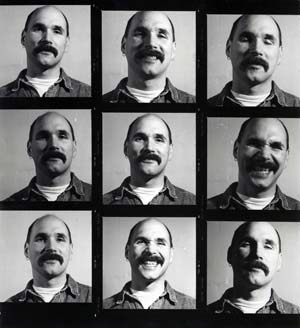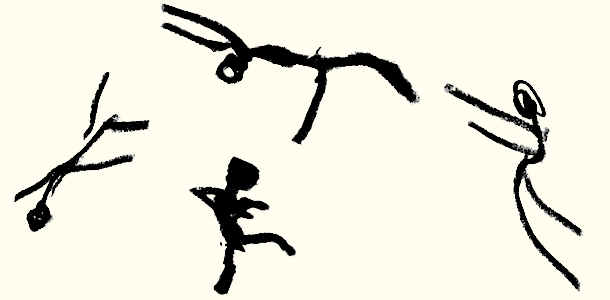
|
Bob Ostertag & Pierre Hébert
at the Guelph Jazz Festival |
|
| September 6, 2006 • Macdonald Stewart Art Centre • Guelph |
|
|
|
|
|
Blast of Death
by Tom Sekowski
|
| I felt it. There was something in the air that particular Wednesday night. Maybe it was the rapid lightening and hail that I encountered on the highway coming up to Guelph. Perhaps it was the brisk, inevitable change of season that led me to think once I stepped inside the Macdonald Steward Art Center in Guelph, all things would come crashing down as they did. It’s been a long decade since I last had the opportunity to see Bob Ostertag live. Back in 1995, his Say No More project was the highlight of the year’s FIMAV (Festival international de musique actuelle Victoriaville). A standing ovation was seen and heard following that show for more than a few minutes. The guy reached his career peak, or did he? |
That same year, he went on to experiment with dance music on the queer-centric and very likable Fear No Love. Then, a few years back, he began to get into visual arts, along with his friend, Quebec filmmaker Pierre Hébert. They produced a spectacular show Between Science and Garbage (that has since toured and been issued on DVD by Tzadik).
This night’s event featured a yet unnamed piece that was the epitome of the horror and the bluntness of war. There was nothing gentle or soft in the music or images presented by either of the two artists. Just to give you an idea of what each one does. Hébert is known as an instant filmmaker. He draws animated sequences, which are then, within seconds, put up on the screen behind him. We got images of an animated bomb blasting into a dead Lebanese child (all images were horrendous war photos of the recent Beirut air strikes). We saw parents mourning over their dead child as it lay in the rubble. We saw horrific human wounds and indescribable expressions of human suffering.
|
|

Bob Ostertag |
|
All of this was orchestrated by Ostertag, who first provided video game music (sounds of bullets flying through the air), then moved onto samples (Arabic music, bomb blasts, etc.) then went all out and moved into the noise category. All the while all of this was going on he controlled the action via a joystick. He played a combat game, then a samurai war game, and then he layered images on the screen one on top of the other. While Ostertag responded to the animation and the visuals on the screen, Hébert responded to the audio portion. We also saw an animated body flying through the air, a screaming face and dozens of intense bomb blasts.
All of this felt unreal while at the same time, it was much too real. I felt as if I were inside the combat video game Ostertag was conducting. It was as if I were the pawn and the bombs were going off around me. On music alone, I have to say this would not be an unheralded success. However, with the visuals, this was pure horror. From the perspective of an unsuspecting audience member, Ostertag and Hébert succeeded. A couple of laptops, game controllers, a processor, an animation tablet and two men willing to bring new ideas to the table. Call it an audio-visual improvisation on the evil of war. I can’t recall ever feeling as horrified and scared as I did that night. I’ve been having nightmares ever since.
|

Drawings by Pierre Hébert
|
|
|
| > bobostertag.com |
|
> hebert.kitp.ucsb.edu |
| > www.guelphjazzfestival.com |
|
|
|
|



